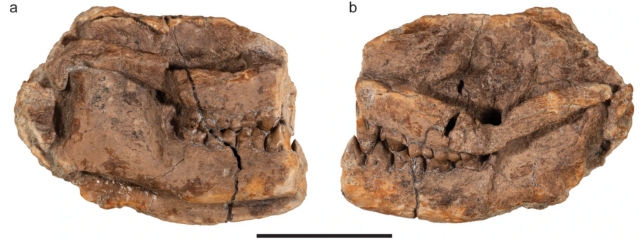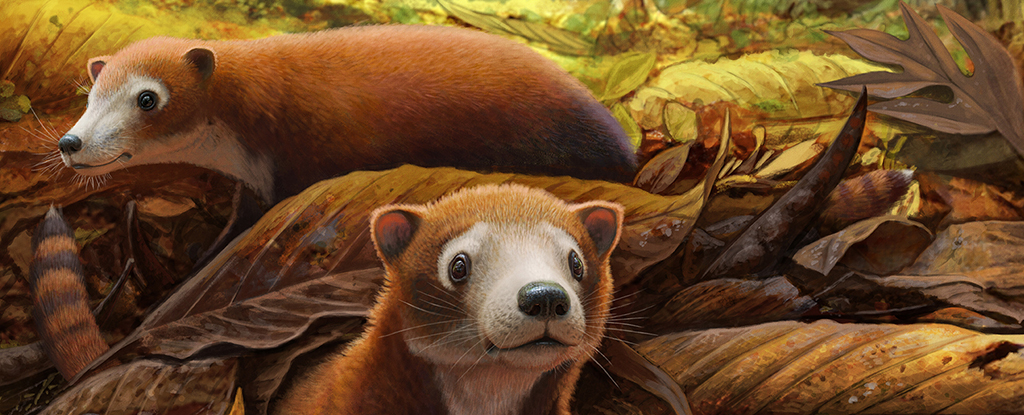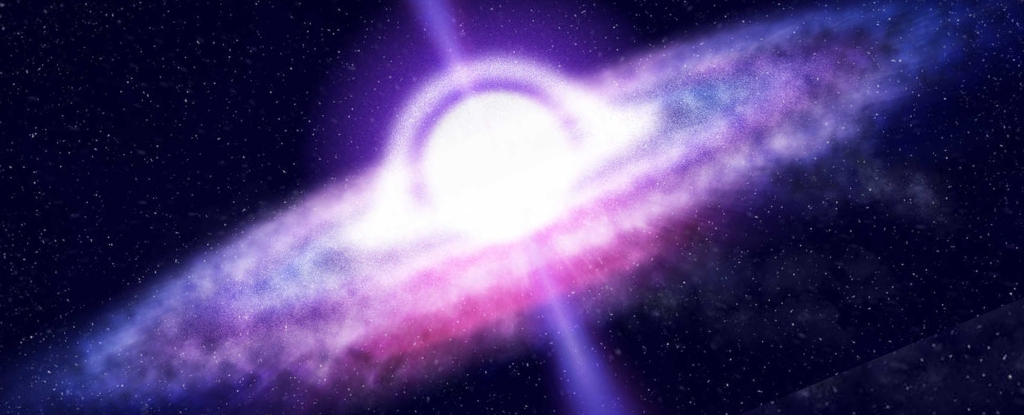Meet the newly discovered species Militocodon lydae: Thought to be about the size of a rat and weighing up to 455 grams or 16 ounces, this small mammal is the likely ancestor of all modern hoofed animals, called ungulates.
The animal would have lived around 65 million years ago, appearing just after the extinction of the dinosaurs, and was identified from part of a skull and jawbone recovered from the Corral Bluffs, a fossil site in Colorado.
According to the researchers behind the discovery, the creature fills some important gaps in our knowledge of the Periptychidae family of early mammals, which ascended after the dinosaurs‘ departure.
“The discovery and thorough descriptions and comparisons of the partial M. lydae skull represent an important step toward unraveling the complex evolutionary history of periptychid mammals,” paleontologist Lucas Weaver of Kent State University in Ohio and colleagues write in their published paper.
After unearthing the specimen and cleaning it up, the team used sophisticated scanning techniques, 3D reconstructions, and teeth comparisons – measuring them against teeth from other fossils and modern-day animals – to put M. lydae in the right place on the evolutionary tree.
Key to the research was evidence that the animal’s teeth were used to shear and crush rather than grind. That suggests the small creature would eventually lead to the cows, pigs, and deer we have today.
The researchers have only found a handful of M. lydae fossils across the last eight years, so further discoveries and studies are still needed to confirm that this small and rather cute-looking animal is indeed what we think it is.
“The continued discovery and study of early Paleocene archaic ungulates will almost certainly reveal more specimens that do not fit neatly into existing taxonomic bins, forcing us to contend with an evolutionary history tangled by evolutionary grades and transitional forms,” the researchers write.

Each new fossil discovery gives researchers a chance to refine and rethink the pattern of evolution on Earth – almost like the bigger picture comes into sharper focus every time a new find is analyzed.
Tracing the evolution of animals directly after the demise of the dinosaurs has been challenging for experts because of a paucity of fossils from this time. The Corral Bluffs site, which paleontologists have been excavating for decades, is proving increasingly valuable in helping to tackle that problem.
It would have been a time of speedy and widespread diversification in the animal kingdom, but particularly for mammals. After the dust settled from the asteroid impact, and with the dinosaurs out of the way, mammals like M. lydae took the opportunity to thrive.
“Rocks from this interval of time have a notoriously poor fossil record,” explains Denver Museum of Nature & Science paleontologist Tyler Lyson, who led the research team.
“The discovery and description of a fossil mammal skull is an important step forward in documenting the earliest diversification of mammals after Earth’s last mass extinction.”
The research has been published in the Journal of Mammalian Evolution.





